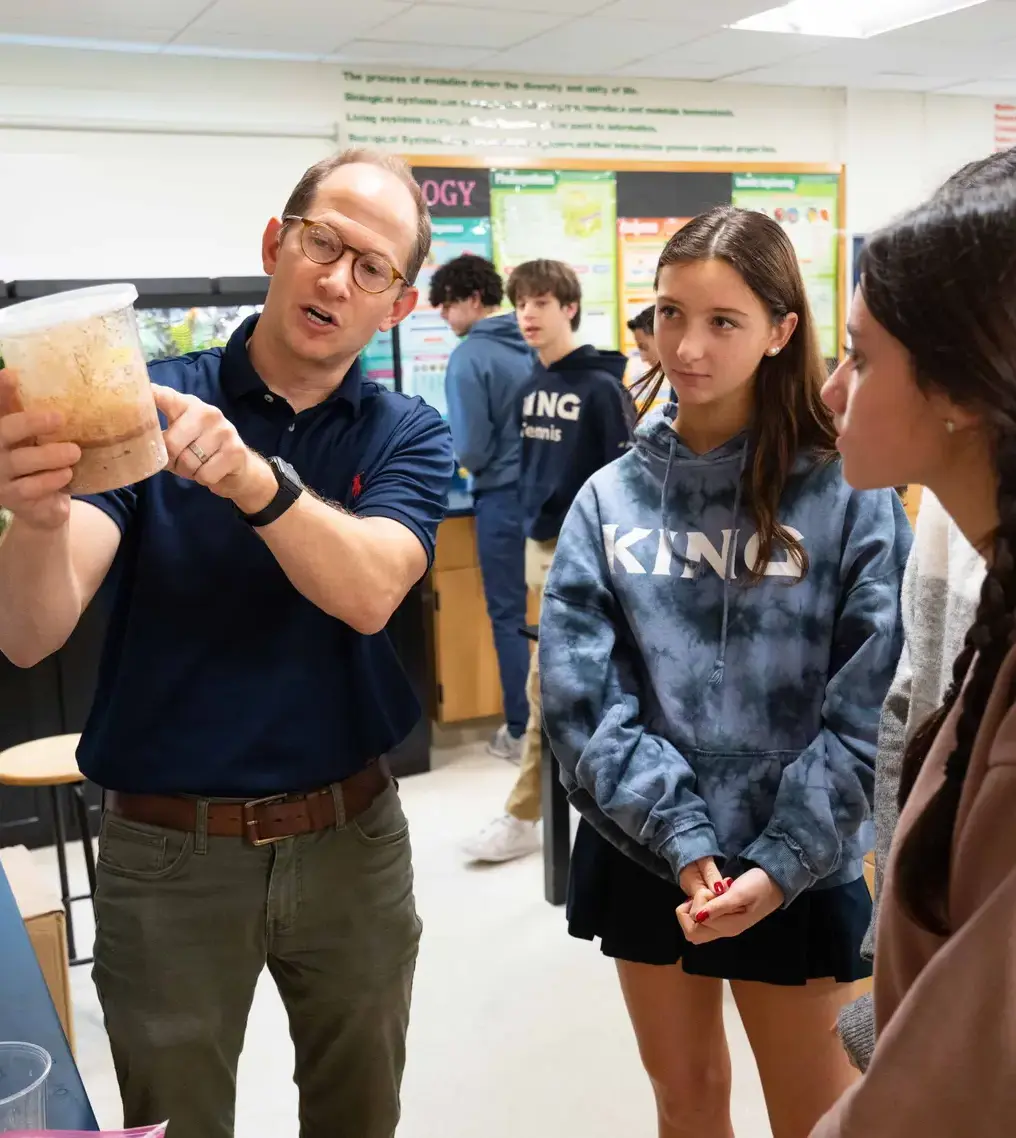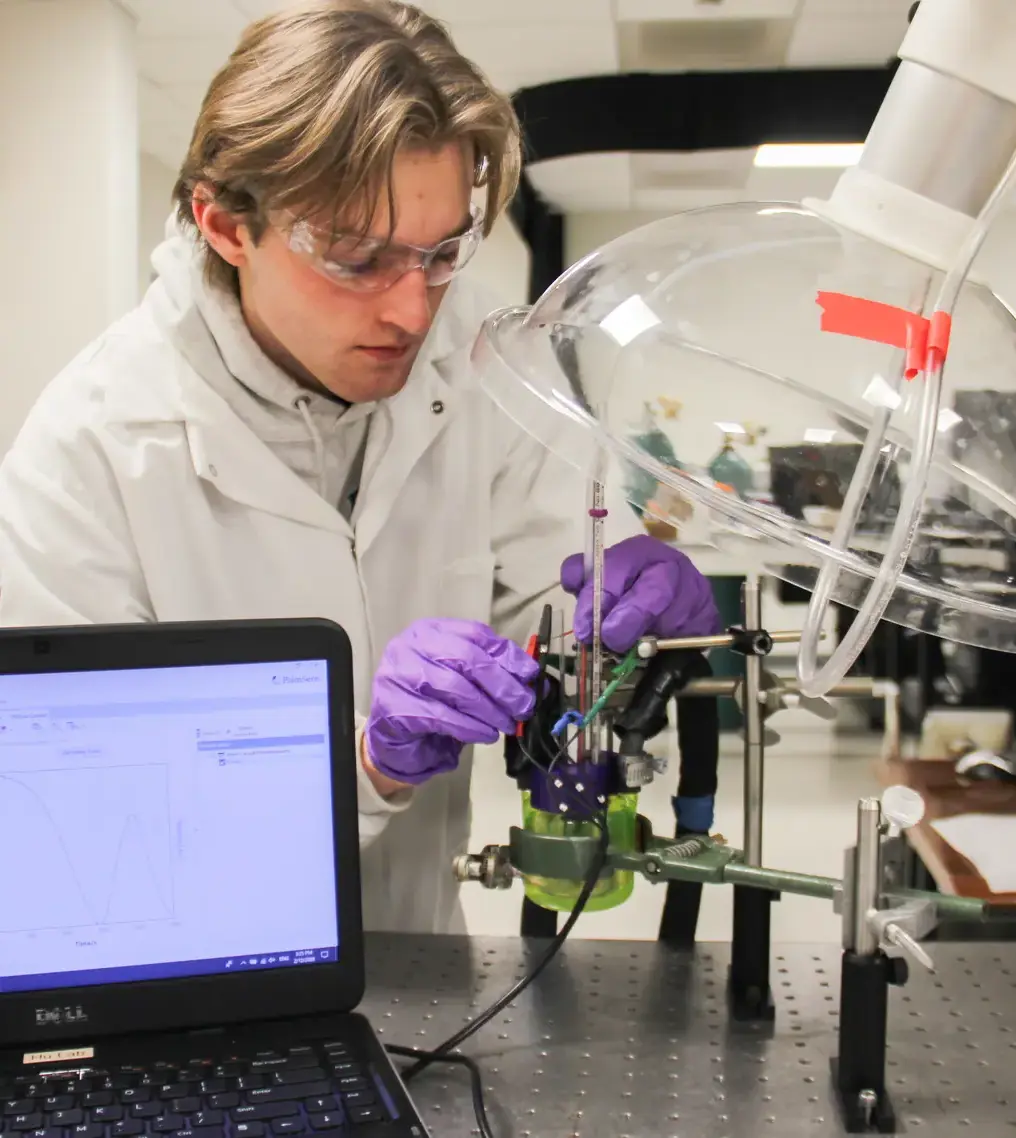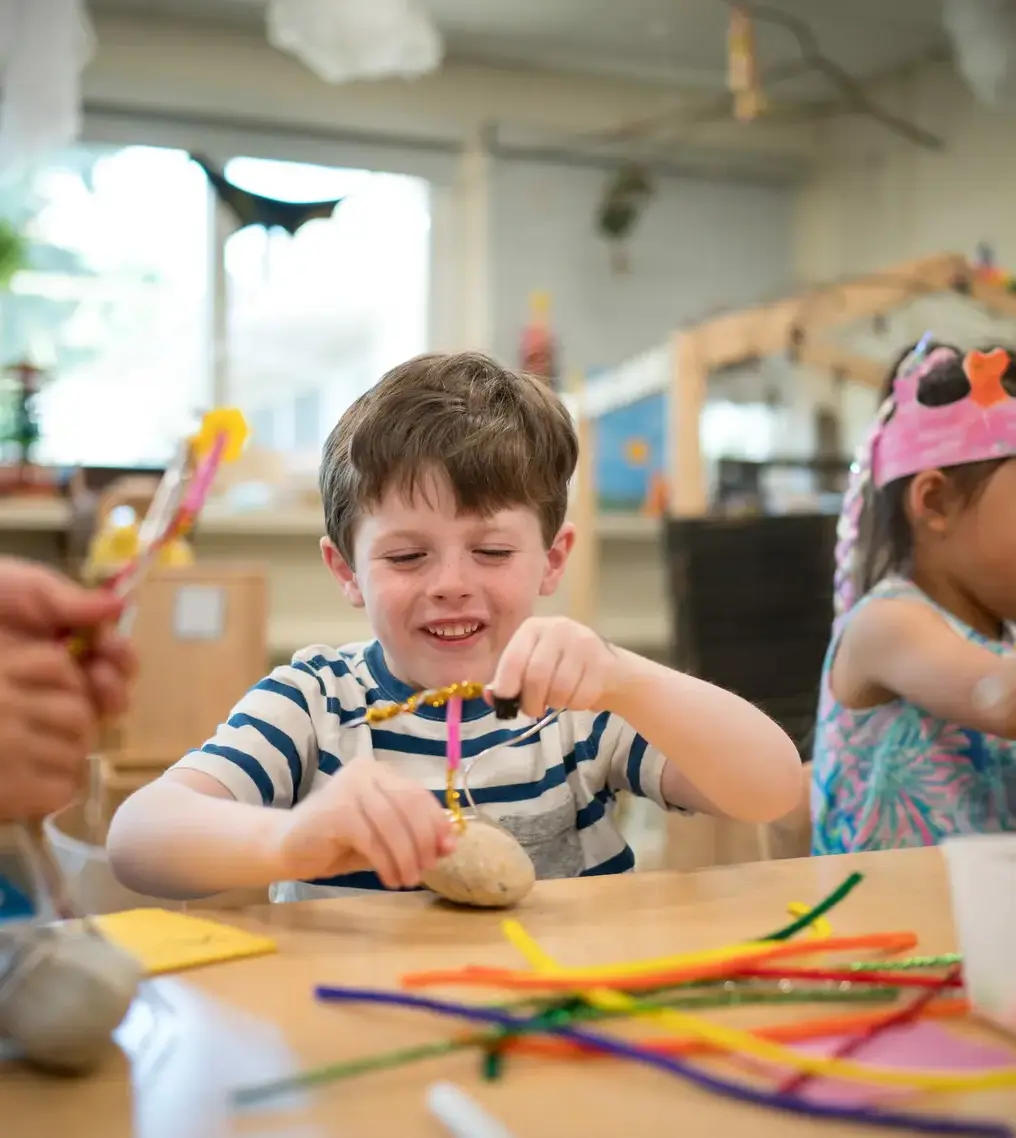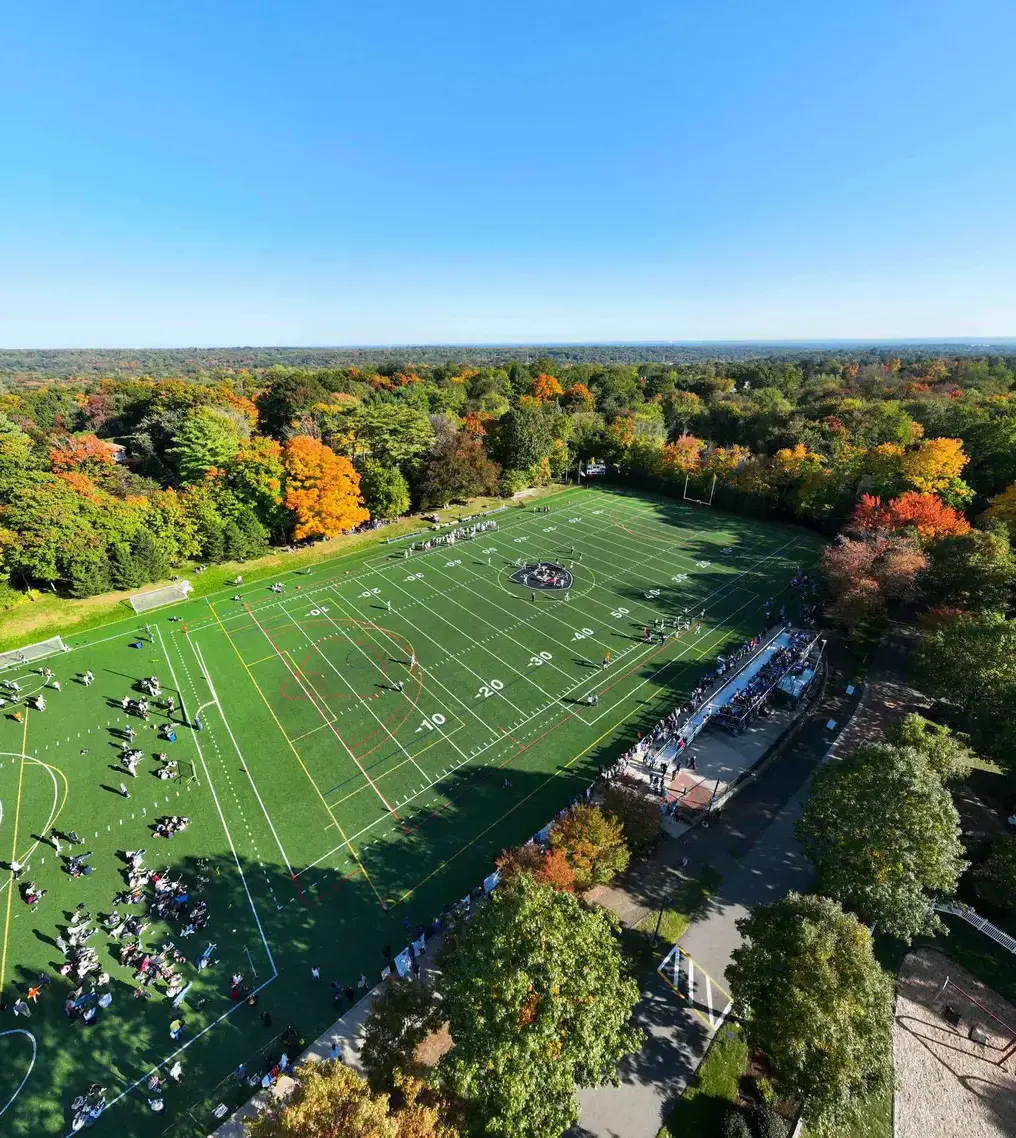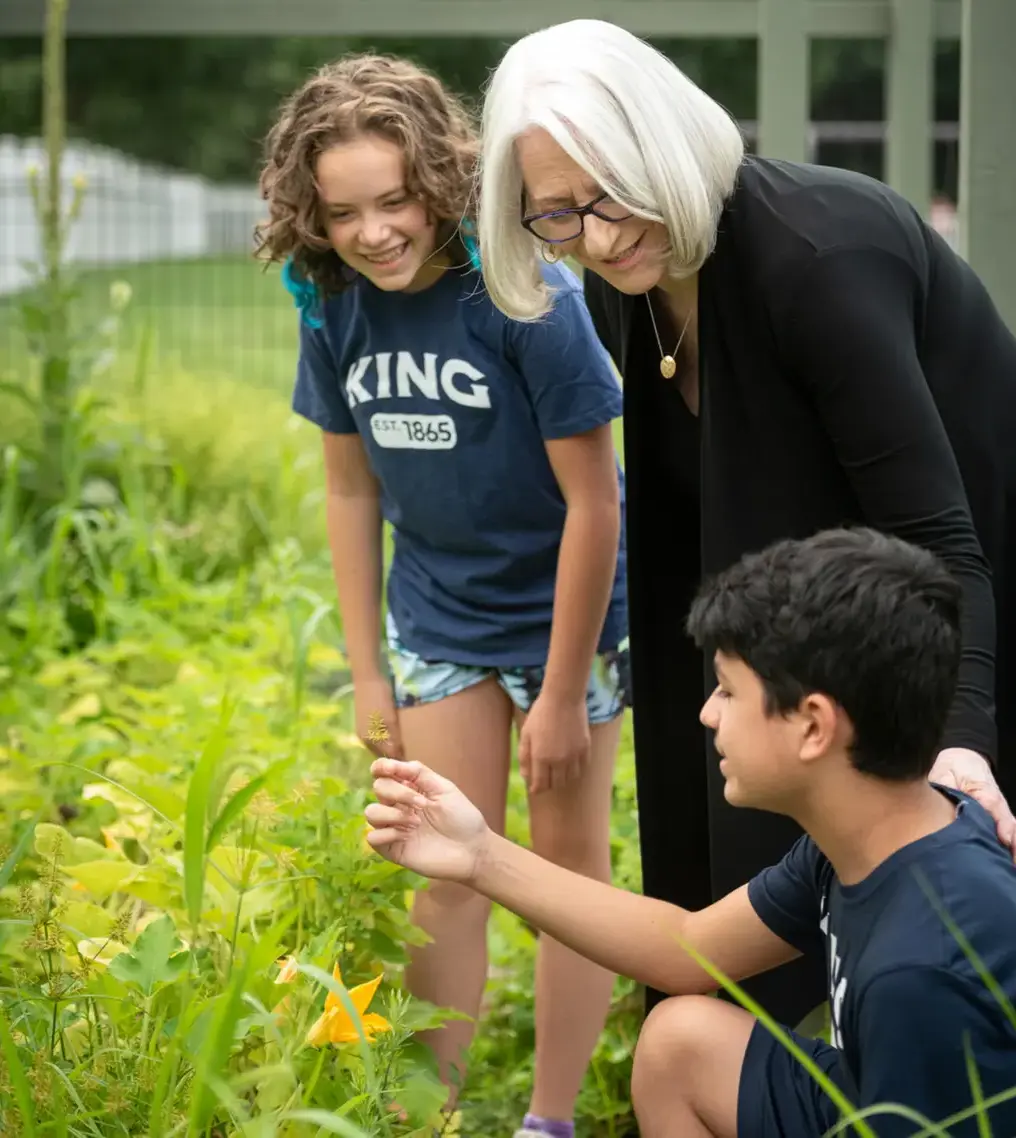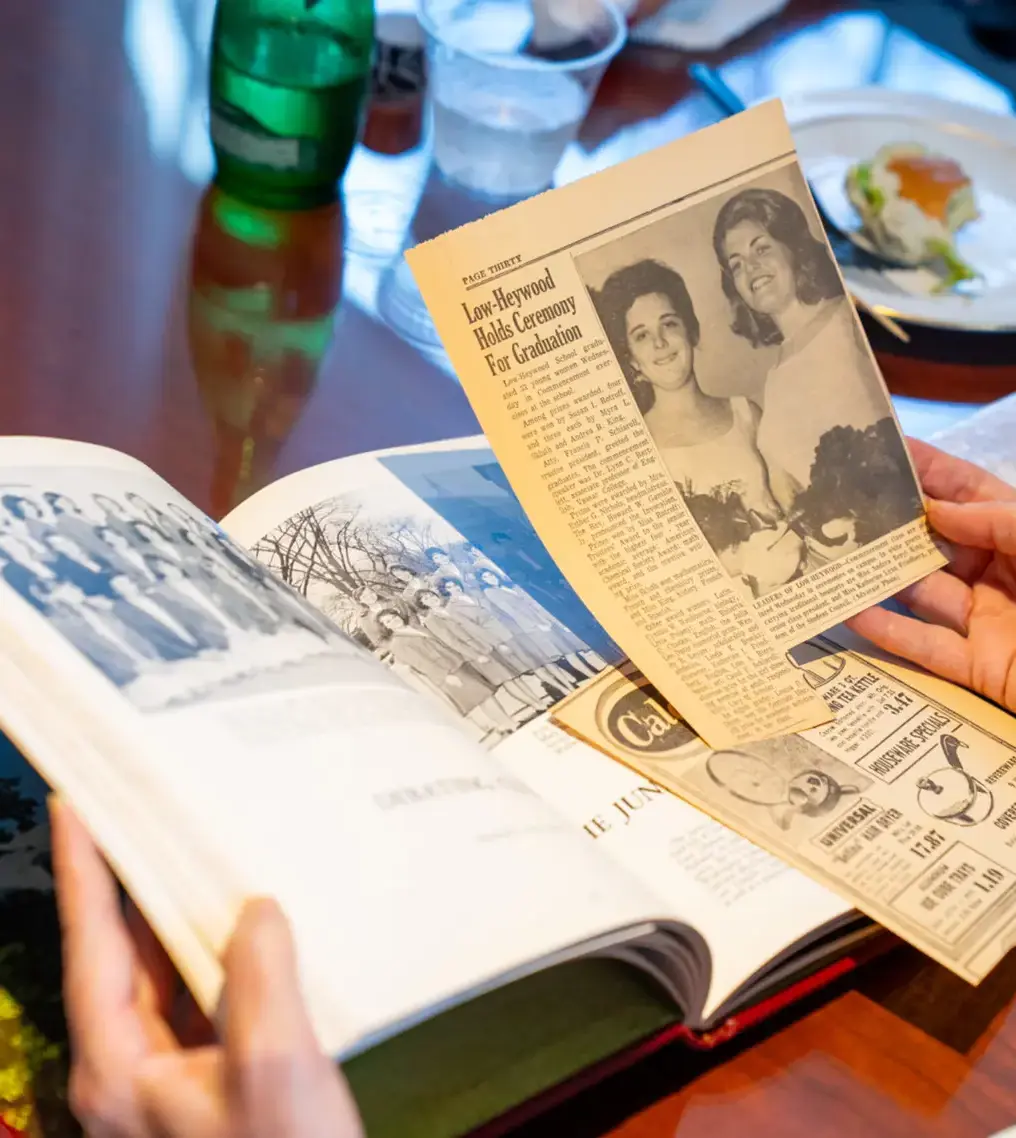King’s Frog Project Begins Expansion Into Zoos Across the U.S.
What began as a single vivarium in an upper school science classroom has evolved into a nationally recognized conservation effort. King’s Frog Conservation Project, known for successfully breeding the critically endangered Oophaga lehmanni in 2022, has reached a new milestone in sharing its frogs and expertise beyond campus and into accredited zoos and aquariums across the country.
“This didn’t come from a textbook,” said Science Department Chair and project director Nick DeFelice. “It came from student curiosity, perseverance, and the belief that a high school can make a global impact.”
This past summer, the project officially donated two red-banded dart frogs and a custom 90-gallon vivarium to Jenkinson’s Aquarium in New Jersey, marking the first external placement of King-bred frogs. Built entirely by King students, the vivarium includes a complex ecosystem of water features, misting and fogging systems, ventilation, and lighting, intentionally designed to replicate the frogs’ native Colombian rainforest.
“Our team had to solve engineering challenges at every turn,” noted DeFelice. “But seeing our students’ work on public display and supporting a conservation institution is incredibly rewarding. Now, future builds will move even faster.”
King’s frogs are now officially registered in the Association of Zoos and Aquariums (AZA) database, meaning their lineage is documented and available to AZA-accredited institutions nationwide. This recognition cements the Frog Project’s role in ex situ conservation — protecting species outside their natural habitat — allowing zoos to trace and potentially breed King frogs as part of larger genetic diversity initiatives.
The project’s reach is steadily expanding. Students are currently completing a 40-gallon vivarium for the Bronx Zoo, along with two frogs, marking the second major donation of both habitat and animals. Meanwhile, the team is in the paperwork phase with the Philadelphia Zoo and Buttonwood Park Zoo in Massachusetts, laying the groundwork for future placements that could establish additional breeding populations.
The project also maintains an international connection with the Cali Zoo in Colombia, where each year King students send a care package of supplements, minerals, and equipment to support the breeding lab responsible for reintroducing the species into the wild.
The population on campus has grown to 11 frogs, including two new froglets just a month past metamorphosis. A major goal for the 2025-26 academic year is to establish a new genetic breeding line to strengthen the species’ long-term viability in captivity.
The project is currently overseen by 15 upper school students, each contributing in unique ways, from husbandry and habitat engineering to scientific documentation, public education, and art.
A dedicated member of the Frog Project since Grade 9, Nina Griffith ’27 has found deep purpose in caring for a species most will never encounter in the wild. What began as an interest in conservation quickly grew into a passion for advocacy and discovery.
“When I first joined, I expected it to be mainly about husbandry, but it was so much more than I imagined,” Nina said. “I’ve connected it to my interests in art, from building and carving tank backgrounds to designing signage for museums and aquariums. There are so many opportunities within the program, and I love how you can customize your experience to match your hobbies and passions.”
Kate Johnson ’27 has been working with the project for two years and echoes Nina’s personal growth.
“Being part of a project that makes a difference while allowing me to learn has been inspiring,” Kate said, adding that she enjoys the way the project brings people together around a shared goal. “Everyone in the club is motivated by the same purpose, which encourages collaboration, teamwork, and the creation of new connections. It’s amazing to see what can be accomplished when a group of people works together toward a common cause.”

